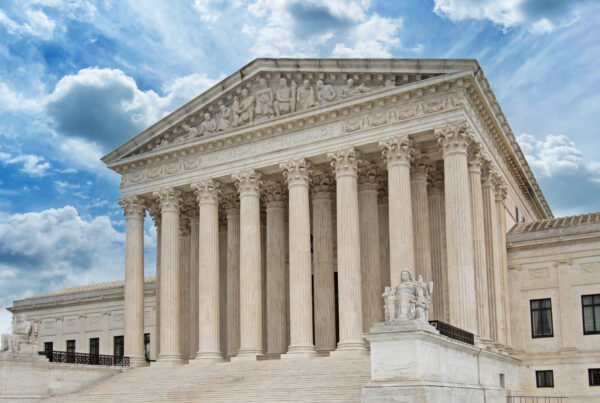Winter 2015 CPA Newsletter
Volume 31 Issue 1
By Chris Frederick, CPA
When the topic of fraud comes up in conversation, most people do not want to believe that their Homeowners Association or Condominium Association could possibly be susceptible to the trap that is fraud. Although the typical fraud schemes that are covered by the media involve millions if not billions of dollars, like the recent Bernie Madoff embezzlement or the Goldman Sachs scandal, in actuality it can happen to any size organization and in any dollar amount.
Although it is highly unlikely that the opportunities for fraud will ever be 100% removed from any organization, it is the responsibility of every board member to ensure their Association’s risk of fraud has been minimized. The best and easiest way to minimize fraud risks are through an adequately designed and properly implemented set of internal controls. As auditors, we typically conduct various tests and multiple interviews during our standard audit procedures which may uncover fraud. However, it should be noted that the annual audit’s main goal is not to detect fraud within an organization; rather the main goal is to declare those specific statements free of material misstatement which includes material fraud. That is why it is so important that a good set of internal controls, accompanied with appropriate board oversight, are in place.
Here are some examples of situations we have encountered recently including the manner in which we detected the fraud, and the steps the Board could have taken to remove the fraud risk. The situations have been altered slightly to hide the identities of the Associations and people involved.
“Who is that vendor?”
Situation: The Property Manager had absolute control over the finances of the Association. As a result, the property manager issued checks and paid for services that were never performed at the Association. This was accomplished using a related third party entity that provides cleaning and maintenance services. (This could also have been done using a completely fictitious company). The third party would provide invoices for services that were never completed at the Association. The property manager would then approve the invoices and have the accounts payable department issue the checks. The property manager would sign the checks and pay the bills. This can occur anytime the Association’s Board does not review or sign checks.
Clue: The Association had contracts in place for multiple services including cleaning with unrelated independent vendors. At the same time, the related third party vendor would send weekly bills for cleaning services which they did not perform since those services were all provided under a different approved contract.
Detection Method: As we reviewed invoices and contracts during the audit, we noted that the identical service was provided for the same period by multiple vendors. We identified the situation, presented our findings to the Board who indeed confirmed that the related third party maintenance company had never been hired to provide the standard weekly cleaning at the Association.
Fraud Technique: The Property Manager was providing false invoices in order to divert the Association’s cash with what on the surface, appeared to be legitimate invoices.
Recommendation: The Board should review all disbursements made on a monthly basis and if any vendor is not recognized, or if the dollar value of an invoice seems high, the Board should follow up and request to see actual invoices or discuss the matter with the vendor.
“Ensure the funds are accounted for”
Situation: The Association suffered severe damage as a result of Super Storm Sandy which resulted in an insurance claim in excess of $300,000. The Association decided to open a separate bank account to track the project. A Board Member convinced the Board to allow her to be the point person for the claim and all subsequent repairs. There was no oversight on this account and the Board Member ended up spending some of the money on personal expenses.
Clue: When we as auditors reviewed the income and expenses from the claim’s newly created bank account to the books of the Association, we noted the two sets of records wouldn’t reconcile.
Detection Method: We were provided a schedule of income and expenses that the Association incurred as a result of the insurance claim. The information contained in the schedule was not the same as the information contained in the corresponding bank statement for the new account, which we confirmed as part of our audit procedures. Further investigation led us to find that there were additional disbursements within the account that were not recorded on the books of the Association; ultimately those additional checks were proven to be fraudulently paid.
Fraud Technique: Lack of oversight allowed the Board Member to have unrestricted access to the funds in the new bank account which were ultimately used for personal use.
Recommendation: A system of checks and balances should be in place so one person does not have unilateral control of any aspect of the financial process. In this case, the management company should have been receiving the bank statements and preparing a monthly reconciliation. This would have highlighted any anomalies.
“Hurry I need that check”
Situation: The Association had a credit card which was used from time to time to purchase supplies. The property manager also had a credit card with the same credit card company. The property manager would approach the accounts payable clerk at the management company and insist that the clerk cut a check for the credit card because the due date was quickly approaching. The property manager would then take that check and apply it to his own personal credit card account. The accounts payable clerk would still pay the Association’s credit card when the bill came through the proper channel. As a result, the property manager was able to have the Association pay their personal bill.
Clue: We noted during our expense testing that there were an unusually high number of credit card payments made during the year.
Detection Method: When we reviewed the disbursements we noted that supporting documentation was nonexistent. Certain credit card statements were not available and certain payments never appeared on subsequent Association credit card statements. Once we confronted the property manager he confessed to the scheme.
Fraud Technique: Although the management company and the Association had policies in place for check requests, the property manager was able to circumvent that procedure and obtain checks which were ultimately used for personal use.
Recommendation: Had the Board been more observant of the monthly disbursements they would have noted that multiple checks were being written for what is typically a single monthly charge. Much like each utility account, the expectation for a credit card would be to see a single check being written every month to pay the bill. As soon as the Board saw multiple checks for what should be a single expense, it should have raised a red flag and further investigation would have blown the cover of this fraud scheme.
How Can Associations Protect Themselves
It is important that all Boards have an understanding of the controls put in place by their management company, or required to be followed by their in-house staff and ensure that those procedures are being properly adhered to. A few procedures that the Board should consider to supplement the internal controls of management are:
- Direct approval and authorization of all contracts and invoices
- Review of monthly accounts receivable and monthly revenue reconciliations
- Review of monthly accounts payable aging -Review of monthly paid invoice listing
- Monthly bank statement and reconciliation review
If there are any unexplained differences, unusual charges, or unknown transactions the Board has the right and responsibility to follow up with those issues.
Summary
It is clear that fraud can happen within any organization. That is why it is important to keep a watchful eye over all financial transactions as ultimately it is the Board’s responsibility to monitor and mitigate any fraud risk. This can be accomplished with good internal controls which include appropriate oversight and segregation of duties. It is equally important to select an auditor who has a thorough understanding of how Associations operate. With this understanding, your auditor will be able to make timely and pertinent recommendations for possible improvement in internal controls.
Please feel free to contact your Wilkin and Guttenplan advisor with any specific issues, questions, or concerns.





